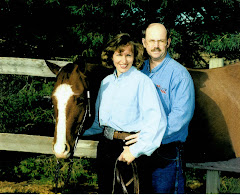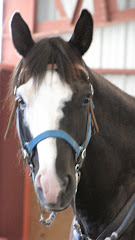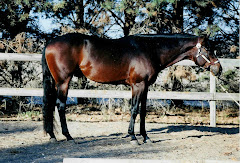June 16, 2010
Day 3 was preparation for the canter or lope. This is the point of where I am at in Shaggy’s training. We continue with the walk-trot-walk transitions. Building on transitional work is the key to moving towards higher levels of maneuvers.
Walk to Trot and back to Walk transitions prepares the horse to move out. This causes the horse to start thinking about when the transition is coming. We work the body and the mind of the horse by varying transitions. We move from the walk to the trot within a few walk steps. Trot, come back to the walk for 2 walk steps, and trot again.
We can also move the horse out by thinking about and by moving our center while we pedal backwards in the Following Seat. If we want the horse to move out more briskly, we want that center to grow and spin larger. We grow up and that helps the horse to stay light in the front end also. If we want the horse to move slower, we spin our center smaller and slower.
Through a lot of transitions into the trot and back to the walk and stop, the horse becomes lighter on the front end. The horse becomes springier in the trot. The lope departure becomes easier as the horse becomes lighter on his front end, deepens his hind end motion, and springs into the lope.
We don’t ask for the lope until walk trot transitions come easily, and the horse springs into the trot. We vary the asking by increasing or decreasing the number of steps between the walk and trot. We add maneuvers and patterns to the work out, keeping the horse always thinking.
The last day of the clinic should be about building on the lope departure. The fourth day is here already. It is exciting when time flies like this and we have so much fun while learning!
“Embrace the Journey!”
Turning Night to Day
9 years ago







2 comments:
wow brenda! susan was just telling me I need to do a lot of walk trot transitions with rainbow to make her lighter in the front end!!!! it all goes together doesn't it?
I see a lot of Sally Swift's Centered Riding theories everywhere, now that I'm looking for it. A lot of riding styles are very similiar, as we are all trying to make the horse a better mover.
Post a Comment